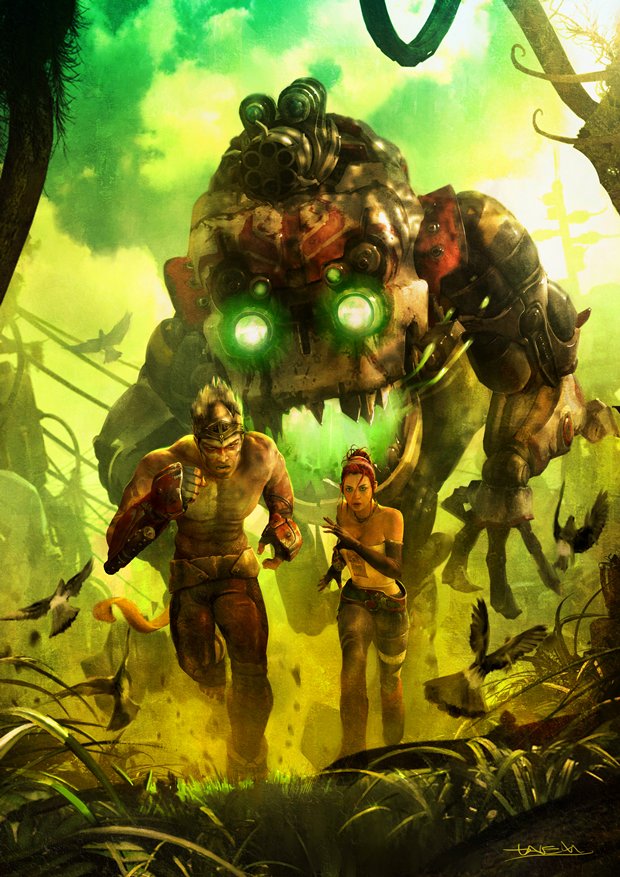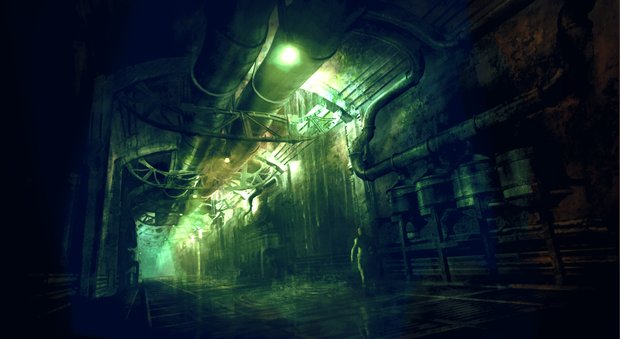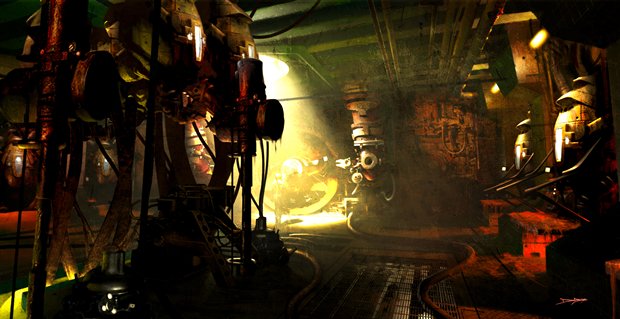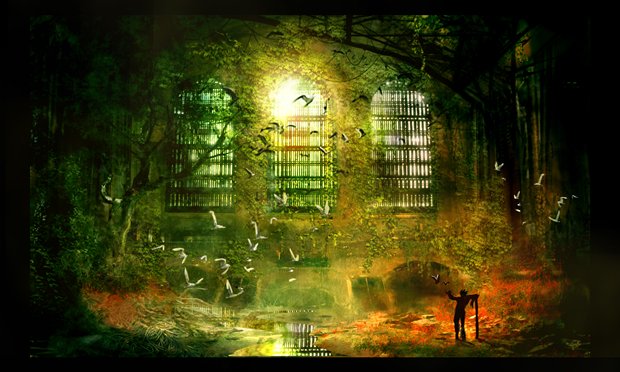The making of Enslaved: Odyssey to the West
A journey 1400 years in preparation
We’ll admit: Enslaved was hardly the King of our Anticip-o-meter early on, before we got to actually play it. We had an early peek and admitted to being intrigued, but it could just as easily have been a ‘possibly rent’ as a ‘must buy’. What we weren’t prepared for was just how bowled over we would be by the characters, as the story progressed in a cinematic style many games aim for, but rarely achieve. If videogames are marching toward artistic equality with cinema, Ninja Theory’s post-post-apocalyptic action title should be remembered as a significant step along the way. But Enslaved’s journey goes back a lot further than the team’s years of spirited development.

In 629AD, Buddhist monk Xuanzang had a dream. This dream told him to journey to India along the Silk Road, examining ancient Buddhist temples and returning the monks of the West to the true ways of the faith. His epic mission became the subject of folktales for centuries to come, collected together in the celebrated Ming novel Journey to the West.
But with time the story traveled a lot further than Xuanzang ever did. The hero of the novel was named Tripitaka (‘three baskets’ of Buddhist teachings) and his progress was aided by a gaggle of grotesques: Sandy the monstrous General, Yu Lung the dragon who takes on the form of a horse, and – most of all – Sun Wukong, the Buddhist Monkey King: fearsome, acrobatic, mischievous… for centuries, the spirit of Monkey has been irrepressible!
So, our burning question for the Chief Creative Ninja at Cambridge development temple Ninja Theory, Tameem Antoniades, had to be: what was the real inspiration for Enslaved – the Chinese legend or the crazy 70s kid’s show Monkey? Thankfully, he laughed: “We are of course big fans of the TV show. A lot of us grew up with it. But we wanted to really give the story our own unique look and feel, so returned to the original book for our inspiration.” The real seeds of the game inevitably lay in Ninja Theory’s first opus. “I read Journey to the West about four years ago when researching the Wuxia (martial arts legends) genre for Heavenly Sword. I really loved the story; in my opinion it’s an epic on par with Lord of the Rings.”

The tale of Monkey and Tripitaka has been recycled in cartoon, movie, TV, opera and comic book over the years – with the ‘beautiful’ figure of Tripitaka by now traditionally played by an actress. It’s always been perfect videogame material – a gang of fighters on an epic voyage, facing off against a series of monsters, with the charismatic Monkey equipped with flying cloud and magical staff – and indeed Ninja Theory had featured a Monkey-style character in its first game, Kung Fu Chaos, in 2003.
This time however, Ninja Theory wasn’t content to simply turn the legend into a game, but used it as the basis for its own story. “Another source of inspiration for us was a TV show called Life After People, which explored what would happen to the world if humans just suddenly ceased to exist.“ The last thing the gaming world needed was another post-apocalyptic game-world – especially one based on New York City – but this approach was something else. “We projected into the future 150 years and came to the conclusion that rather than being a barren wasteland, nature would thrive like it did before humans were here. All of our man-made buildings and structures would just start to be overcome by nature. The setting also suits the game very well. It’s beautiful yet deadly.”

With a familiar concept put together with familiar tech – the Unreal Engine – it wouldn’t be easy to create something surprising. “We wanted to make a game that looks very different in terms of the environment and also goes into a level of character depth that hasn’t been seen before,” says Tameem. “We’re very proud of the fact that we’ve been able to convey real emotions and expressions on the faces of our characters. That’s all our own technology so it won’t be seen in other Unreal games. As for general art, it’s all about our desire to inject color and light into scenes. It’s purely an artistic choice.” But it would take more than clever programming to bring Monkey and company to life.
Sign up to the GamesRadar+ Newsletter
Weekly digests, tales from the communities you love, and more
Early in development for this third IP in the company’s history, there was no question that
the star and helmer of their PlayStation 3 exclusive, Heavenly Sword, would be invited back, and Andy Serkis was in on the project from the off. As director and star, the world’s most celebrated CG actor lost no time in forming a strong team of performers to bring the characters to life, and soundtrack duties were once again undertaken by another Heavenly Sword stalwart, Nitin Sawnhey.

Andy Serkis is a man on a mission – to make sure that nobody ever calls what he does ‘motion capture’ ever again. Tameem explains the law: “Motion capture is where you only capture body and then do face and voice separately. In scenes with multiple actors, sometimes they’re not even captured on the same day! It undermines the power and skill an actor can bring to a scene.” The process Serkis, Rich Ridings and Lindsey Shaw went through is a far greater challenge: “Performance is acting in its purest form. Every body movement, facial expression, and voice is all captured simultaneously with multiple actors. Everything the actor does is pure and real and we do everything we can to preserve that.”
Rich Ridings, as Serkis’ right-hand man, gives the verdict from the actor’s point of view: “There were times on both Heavenly Sword and Enslaved where we approached it almost as a piece of Physical Theater – generating a real live performance buzz, creating environments out of rostra and ramps and ladders etc. Andy and I are both very keen on Physical Theater, where the actors try and create everything in the imagination of the audience. The great thing is if something isn’t working you can try it a different way, and get lots of alternatives. Yeah, it’s inspirational... but that’s also the magic of working with Andy and Tameem.”

The look and the sound of the game were beginning to take root, and the mechanics were in place – the player would be Monkey, an outcast with guile and muscle, tricked by the tech-savvy Trip into being her guardian as she tries to reach her home. Essentially: if she dies, he dies. The monsters from Buddhist legend became robots, left behind from the wars that wiped out the human race, but still programmed to destroy. With Trip on hand to stake out dangers via dragonfly camera, the emphasis would be on platforming and combat, with regular set-piece boss battles.


